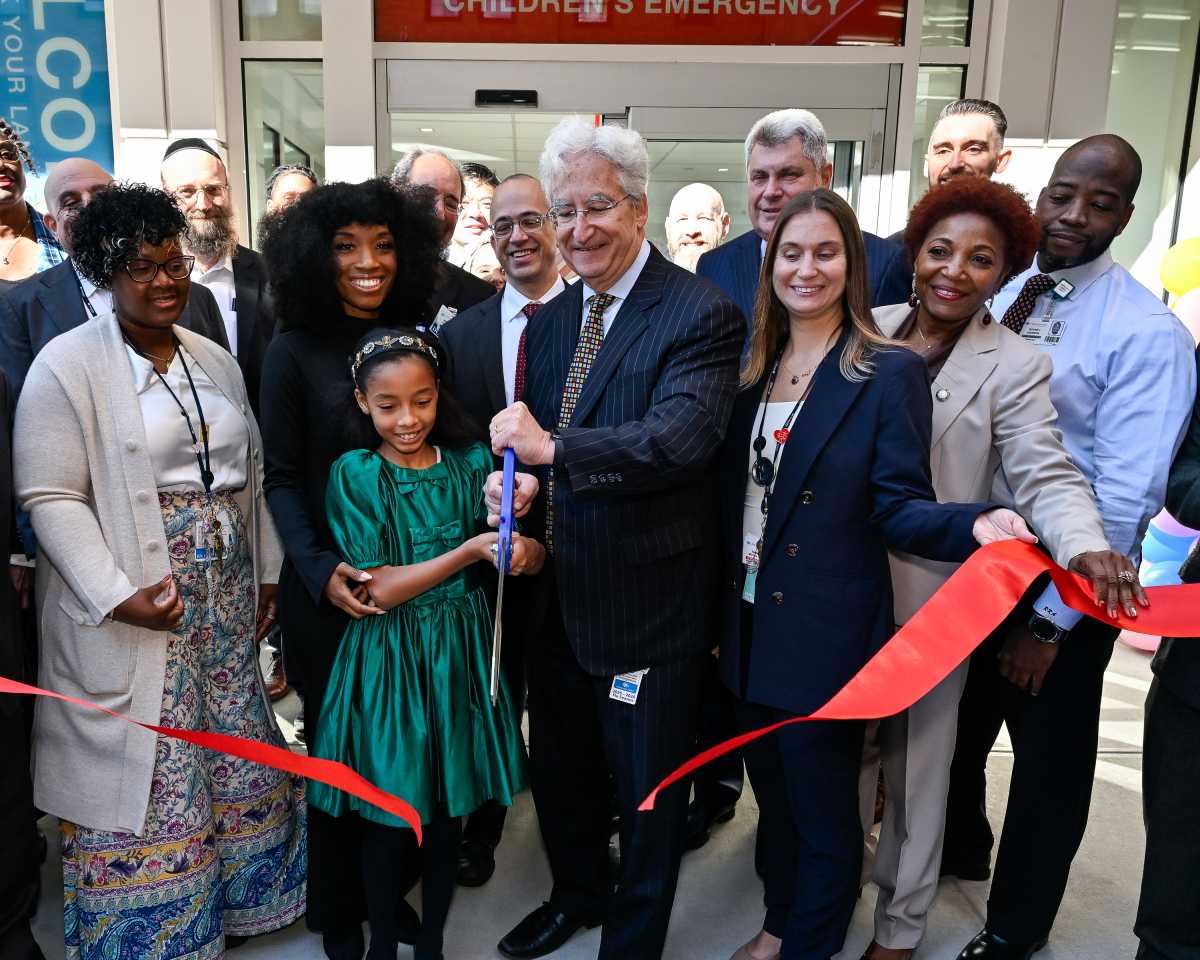BY PERRY N. HALKITIS, Ph.D., M.S. | Despite our best attempts over the last 30 years, the HIV epidemic continues unabated. There are 1.2 million identified infections in the United States, with another several hundred thousand likely undiagnosed. The impact of this ongoing health challenge is noted most dramatically and definitively evidenced among gay men, who represent somewhere in the vicinity of two to five percent of the population — but constitute 50 percent of all AIDS-related deaths, over 50 percent of all infections and over 50 percent of newly diagnosed infections.
With millions and millions of dollars spent on HIV prevention and research — and despite the best attempts of behavioral researchers and leading AIDS service organizations to modify our risk behaviors — the epidemic continues. Initial campaigns focusing on using a condom have, over time, morphed into programs underscoring the importance of efficacy, temptation and motivation to help shape behavior. But the infections continue to spread. So what has gone wrong?
Some, including myself at times, have pointed the finger at behavioral change programs that are overly simplistic, focusing on sex as an act free of emotion or passion (and in many cases, drugs). But sex is more than simple logic, or rational decision-making. Many behavioral programs have oversimplified a very complex behavior — and the programs we have developed or the research we have enacted has ultimately failed to translate to real lives. I often wonder if the folks developing these programs actually have sex themselves.
Some may argue that we have contained the disease. But how true is that when young gay men, especially Blacks and Latinos, are seroconverting at such high rates? Even among White men, there is an uptick in the incidence of new infections as this group navigates its 30s. We simply haven’t gotten it right.
The Center for Disease Control and Prevention (CDC) might beg to differ. For the last several years they have documented programs they refer to as DEBIS (Demonstrated Effective Behavioral Interventions) — which have demonstrated some feasibility in research trails for changing risk behaviors. Small subsets of these were developed for gay men. At a lunch a few years ago, a colleague asked me, “What do you think is the best DEBIS?” My answer was quite simply, “None of them. We still have an HIV epidemic, so nothing is clearly working that well.” For me, these interventions are like a topical ointment or a Band-Aid used to treat a deep skin infection — when what is really needed is a powerful oral antibiotic.
With no effective behavioral change programs in sight, newly developed and tested biomedical interventions have captured the attention of the public, of our leading community-based agencies and of policy makers at all levels of government.
These biomedical interventions have taken many forms, but three have garnered the most attention. The HIV Prevention Trials Network (HPTN) 052 study has shown that treating HIV-positive individuals with antiviral treatments reduces the transmission of HIV to their sexual trails. The CAPRISA trial has demonstrated the efficacy of a Tenofovir gel (Tenofovir, also known as Truvada, an HIV antiviral medication) may reduce the acquisition of HIV by women form their sexual partners. And for gay men, the iPrEx trial has clearly indicated the protective effects of a once a day dose of Tenofovir in prevention the acquisition of HIV.
The findings of the iPrEx trial released last year show that beneficial effects of pre-exposure prophylaxis (PrEP) — that medicating with a once-a-day dose of Tenofovir (Truvada) may reduce the acquisition of the virus by HIV-negative men and transgender women who engage in unprotected anal intercourse. Simply put, daily use of Truvada decreased the likelihood of contracting HIV from “fucking without a condom.” In the iPrEx trial, those receiving PrEP (daily usage of Truvada) were about two times less likely to acquire HIV than those in the placebo (control) group. The likelihood of acquiring HIV was 44 percent less for those on PrEP as compared to those not taking PrEP. These findings are game-changing, and have radically shifted the conversation of HIV prevention from one that is behavioral focused to one that is biomedical focused.
But is this radical shift from the behavioral to the biomedical the right course of action for all of us? In the last six months, I have served on no less than three panels convened to discuss this question — the latest of which was organized by my esteemed colleagues Rafael Ponce, Blayne Culter and Monica Sweeney of the New York City Department of Health and Mental Hygiene for Gay Men’s National HIV Awareness Day. At the same time the impact and roll-out of PrEP as an HIV prevention strategy is being heavily considered and hotly debated by my colleagues and I who serve on the Committee on Psychology and AIDS at the American Psychological Association (as well as policy makers at the CDC who are engaged in conversations about how such a prevention program would actually be brought to scale). Central to these conversations are considerations of how to make PrEP available to all (including those who remain uninsured), how we educate those who are using these approaches to prevent the acquisition of HIV and whether PrEP is a lifelong of a short-term intervention. All of these questions remain answered.
For me there are two bigger issues — one which I will fully address here, and the other to which I will allude.
First, let’s consider the findings of the iPrEx trial in some more depth. Use of PrEP did indeed reduce the likelihood of HIV reconversions. But there are other interesting, lesser-known findings. Not everyone who was on PrEP remained HIV-negative. In fact, a subset of them did acquire HIV. More importantly those who did acquire HIV were more likely to miss doses of their once-a-day medication that those who did not. Those who stuck to their PrEP treatment, were about six times less likely to acquire HIV than those with haphazard dosing. Susan Buchbinder, one of the iPrEx investigators indicated, “It does look like people who were able to take their drug more regularly were more likely to be protected.” Obviously. But this still leaves open the question of adherence.
This finding points to one critical fact: Even an effective biomedical intervention must be informed by behavioral components. People are not machines like a coffee pot, which can be programmed to brew every morning at 7am. We are all imperfect and life circumstances interfere with the daily courses of our lives, the very reason why some of the men in the iPrEx trial missed doses of their medications. Why this surprised anyone is beyond me. How many HIV-positive gay men miss doses of their HIV meds even though they know very clearly that 95 percent or greater adherence is required to most effective combat the infection. Very few individuals are 100 percent adherent to their medications, meaning that they take them every day, and at the correct time, and in its fully prescribed dose. My own research at New York University’s Center for Health identity Behavior and Prevention studies has studied adherence behavior for a decade. Our studies have shown that adherence rates fluctuate wildly. Some gay men are highly adherent, others are poorly adherent and most are somewhere in between.
These complications of adherence are not confined to HIV. The struggle with adherence has been noted for the last several decades in the treatment of numerous chronic diseases including hypertension and diabetes. So too these struggles are evident even in those without chronic disease. How many of you have stopped taking a regimen of antibiotics for an infection you started feeling better despite the fact that your physician has taken you to take the full course? How many of you have missed or chosen to purposely skip a work-out breaking your gym regimen. In short, who among us is fully adherent to our treatments 100 percent of the time. The answer is quite obviously very few.
So how effective will biomedical approaches to HIV prevention truly be in the absence of effective behavioral programming? At the recent New York City Department of Health and Mental Hygiene (NYCDOHMH) panel, my colleagues and I argued quite clearly in favor of a multi-pronged approach to HIV prevention for gay men that marries the best of biomedical innovation, like PrEP, with behavioral support. Taking PrEP may be effective, only if those using this approach to staying negative also continue to engage in safer sex, adhere to their daily doses of the treatment and fully understand what PrEP is and how it works. Motivated by this current discourse in HIV prevention, my research team and I are currently undertaking a study of what they know about PrEP, how it works, its shortcomings and how willing they are to use it. The answers are all over the map.
Therein lies one of the major the complications of PrEP rollout — sustainability and effectiveness in the absence of timely and critical education. Perhaps we need to learn form the lessons of birth control to avoid pregnancy, which itself has not proven to be 100 percent effective, and is never used singly without behavioral programming and education.
I am not dismissing PrEP as an incredible breakthrough. In fact, I herald it. But how we roll out this approach to HIV prevention must be thoughtful and methodical. Let’s face it “take your pill ever day” will work as well as “use a condom every time.” At this critical moment biomedical and behavioral scientists must come together to create effective and informed approaches to rolling out a bio-behavioral approach to HIV prevention. Biomedical strategies alone are not enough, and despite potentially being viewed as a traitor to my tribe (i.e., the psychologists), I say behavioral approaches alone are simply not good enough.
Frankly, I will pull my hair out if I read about some multi-million dollar funded research study to test the efficacy of a behavioral HIV prevention program with some silly, supposedly catchy, but ultimately offensive name like “Positive Love” or “Loving Brothers.” Fueled by two decades of these interventions, my good friend and fellow psychologist Ramani Durvasala — who many of you may know as Dr. Ramani from her TV appearances — spend hours giggling about our own fictitious program: “Hoes and Bros.” Wake-up call to program officers at the National Institutes of Health: Stop funding the same ole nonsense to the same ole tired researchers who haven’t had an original idea since 1992! The epidemic has changed. This generation of gay men is different than those before us. Biomedical advances offer us a new opportunity, so let’s move forward.
Some of colleagues seem to believe that by combining the best of behavioral with biomedical programming the elimination of HIV is within our grasp. Knowing what I do about infectious disease eradication efforts that have not always worked, I am a much more pessimistic. However, I also think that bio-behavioral combination approaches are an excellent first step, in a similar manner to which combination antiviral treatments changed the course of the AIDS in 1996. But, unless we address the homophobia, discrimination and the social stressors and inequalities gay men face, the HIV epidemic will always be among us. But I will save these ideas for another day.
Perry N. Halkitis, Ph.D., M.S. is Professor of Applied Psychology, Public Health, and Medicine and Director of the Center for Health, Identity, Behavior & Prevention Studies at New York University. He is currently working on a new book (“The AIDS Generation”).






































